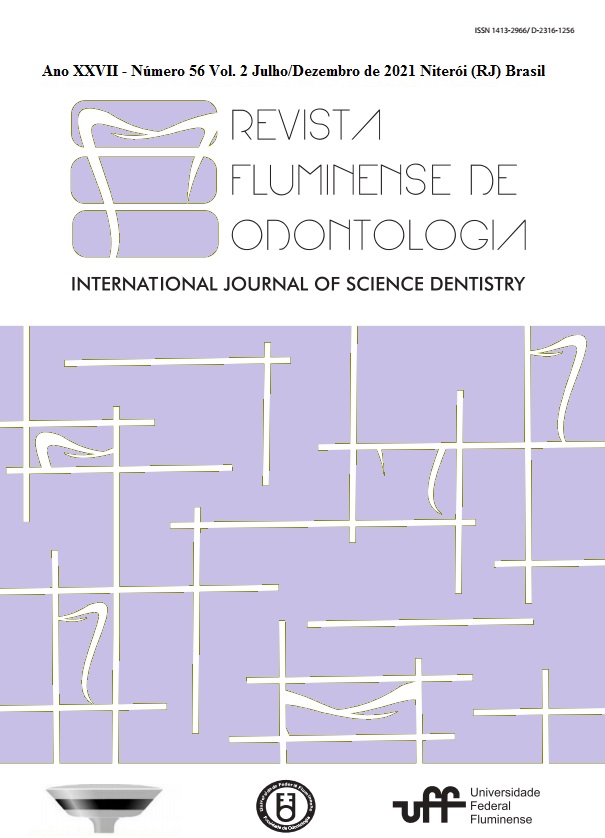BIOMECHANICS OF NON-CARIOUS CERVICAL LESIONS IN FINITE ELEMENT MODELS: AN INTEGRATIVE REVIEW
DOI:
https://doi.org/10.22409/ijosd.vi56.46531Resumo
Non-carious cervical lesions affect permanent teeth and cause the loss of healthy dental structure through a non-bacterial process. The occurrence of these lesions is multifactorial, although components of the occlusion are frequently associated. The objective of this article is to present a biomechanics of non-carious cervical lesions in finite element models. It is an integrative review of in silico studies carried out in PubMed, Scopus and Web of Science databases, using a PICo search strategy with descriptors. Studies in three dimensions carried out using finite element softwares that evaluated the biomechanical behavior of non-carious cervical lesions, without language restriction, published between 2000 and 2019 were included. Nine studies were eligible, analyzed and synthesized. The evidence indicates that when oblique occlusal forces are applied, the cervical zone of the dental elements receives greater stress, especially in the subsurface enamel. Furthermore, enamel can be more susceptible to stress than dentin, while V-shaped cervical lesions tend to receive more stress than U-shaped lesions, as well as the depth of these lesions potentially increases stress. Bone support and root morphology can modify the distribution of occlusal forces in dental elements. Thus, the biomechanical behavior of non-carious cervical lesions in finite element models is directly associated with oblique occlusal forces capable of generating tension in the cervical of dental elements.
Keywords: Tooth Wear; Bite Force; Dental Stress Analysis; Review Literature as Topic.


